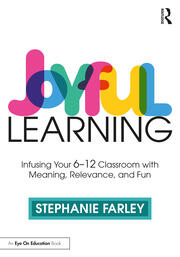By Stephanie Farley
 Back in 2009, our wonderful school librarian* handed me a book she thought I might like: Reif Larsen’s The Selected Works of T.S. Spivet. I was immediately smitten by this story about a 12 year-old aspiring cartographer living in rural Montana.
Back in 2009, our wonderful school librarian* handed me a book she thought I might like: Reif Larsen’s The Selected Works of T.S. Spivet. I was immediately smitten by this story about a 12 year-old aspiring cartographer living in rural Montana.
Not only did I grow up in Montana myself – and it’s always a thrill to read about your home environs – but I was enchanted by the titular protagonist, who figured out a way to map all kinds of interactions I didn’t realize were mappable. An especially delightful map was of T.S. Spivet’s dad drinking a glass of whiskey.
 From The Selected Works of T.S. Spivet
From The Selected Works of T.S. Spivet
The whole book was intoxicating! I loved the maps, the characters, the setting, the plot…and I wanted my students to love it, too, so I started teaching it the next year.
Alas, my 8th graders were not delighted with T.S. Spivet. They found it slow; the maps held no allure; and the protagonist didn’t charm them as he did me. Okay. That’s how it goes as an English teacher: you can’t win them all.
Making maps in our own classrooms
Eighth grade boredom aside, Reif Larsen’s lesson that maps are for more than directions has stayed with me. I’ve also encountered ideas from my colleagues and in pop culture (I’m thinking about Brené Brown’s Atlas of the Heart) that have deepened my commitment to mapping the unusual. Consequently, I’ve found sneaky ways to get maps into various curricula. Here are a few ideas.
► I ask my English students to make maps for the following purposes:
› Visualizing the settings of books we’re reading. The directions for this are: “Make a map of an important setting in the book”. It’s always interesting to compare what each student draws, what they find important, and how they represent the elements of the setting. This is a particularly useful activity for students whose strengths are visual-spatial.
› Checking for understanding of how setting both shapes character and supports the theme. The directions here are “Make a map of a significant setting in the book. Be sure to include a symbol on the map that relates to the theme and be prepared to explain how the setting you chose impacted/influenced the protagonist”. Again, this activity allows you to see if students understand the connection between setting, theme, and character. For example, how might Romeo and Juliet have turned out differently if it were set in Milan rather than Verona? Map it!
› As a pre-writing activity so students can visualize the setting of stories they plan to write and develop a fuller understanding of the significance of setting in establishing character. The directions for this are “Draw a map of the setting where the height of the conflict takes place in your story. Be sure to include information in the map about how the setting influences the conflict and impacts the protagonist”. This activity allows students to think like an author and consider why they’ve chosen to have their conflict occur in a certain physical location in the story.
› Understanding and following the plot of a complex tale. You may have done this in school if you read something like Homer’s The Odyssey, but it also works for stories that cover a smaller time span. For example, students could map the plot of Lord of the Flies and discover that the further from the beach the boys move, the less constrained they are by the social norms that guided their behavior prior to landing on the island. The directions for this might be “Draw a map of the significant events on the island and indicate where each event took place in relation to the beach. What do you notice?”
› As an editing activity to help students understand the clarity of their writing. Students read a description they’ve written to their writing partner, and the partner attempts to map what is being described. You’ve probably done some form of this activity before. It’s enlightening to try to translate language into visuals, and students benefit from being shown, rather than told, that their descriptions could be clearer!
Try these ideas in advisory
► In advisory or any class in which you’re trying to incorporate social-emotional learning, maps are a wonderful way to make the abstract tangible. For example, consider this series of map-making activities that focus on identity, connection, and belonging:
› Ask students to draw a map of where they live. They should include as much detail as possible. It’s helpful to draw their home and neighborhood. My students have really gotten into this activity, even using Google Maps to view their neighborhood and find interesting details. When they’re finished drawing, we talk about how aspects of their home and neighborhood help them feel connected and as though they belong.
› In class two, ask students to add symbols to the map that represent their emotions when they’re present in those spaces. For example, a student might put a heart symbol in their bedroom and a symbol for relaxation in the driveway where they play basketball each day. After this, talk about the positive emotions associated with the various spaces on the students’ maps and how they think those emotions influence their decisions throughout the day.
 Map of emotions
Map of emotions
› In class three, have students draw a map of their school day, adding in the symbols they experience in each space (i.e., heart in a favorite class, but poison in a non-preferred space). Have a chat about how these emotions differ from or are similar to the emotions experienced while at home. In this way, students develop an understanding of the importance of environment on their affect and sense of well-being.
› Finally, in class four, have students create a map of the rituals they experience: the holidays, vacations, and special events that offer anticipatory excitement and meaning. Again, ask students to include symbols for the emotions they experience via these rituals. Have students analyze the rituals, where they take place, and the emotions elicited. To what extent do the rituals create a sense of belonging and connection? How do the rituals inform identity?
Moving beyond the routine
I know you may be thinking “that’s too many maps”! And for some students, that may be true. But my experience has been that a majority of our TikTok- and YouTube Shorts-ified students appreciate a change in the routine of language-heavy, sentence-focused representation of thinking and understanding. Another idea, of course, is that you can simply offer map-making as an optional activity among many choices in a project.
My final pitch for maps is that in a world that is increasingly online and AI-heavy, there’s something pleasingly counter-cultural about going analog with map construction. It helps students make connections they wouldn’t otherwise make, provides an entry point to deep, worthwhile conversations, and offers students an opportunity to exercise their creativity.
Please try this out and let me know how it goes in the comments. I’m excited to see what elements of the world your students decide to map!
[*A shout out here to all librarians! Not only are librarians the kind of generous people who think about you even when you’re not directly in front of them, but they also openly share the delight and transformation books afford us.]
Works Cited
Larsen, Reif. The Selected Works of T.S. Spivet. Penguin Press, 2009.
 Stephanie Farley has been an administrator/teacher for 30 years. Her current role is Director of Teaching and Learning at a school for gifted, neurodiverse students. She also teaches a ninth grade English class. Stephanie, who is interested in instructional design, assessment, feedback, and grading, has served as a Mastery Transcript Consortium Site Director and has been on a number of California Association of Independent Schools accreditation committees.
Stephanie Farley has been an administrator/teacher for 30 years. Her current role is Director of Teaching and Learning at a school for gifted, neurodiverse students. She also teaches a ninth grade English class. Stephanie, who is interested in instructional design, assessment, feedback, and grading, has served as a Mastery Transcript Consortium Site Director and has been on a number of California Association of Independent Schools accreditation committees.
Stephanie’s first book is Joyful Learning: Tools to Infuse Your 6-12 Classroom with Meaning, Relevance, and Fun (Routledge/Eye On Education, 2023). She has created professional development for schools around reading and curriculum and has coached teachers in instruction, lesson planning, feedback, and assessment. Visit her website Joyful Learning and find her other MiddleWeb articles here.
Feature image source: Jeny Randall’s Shakespeare: A Rite of Passage for 6th Graders



